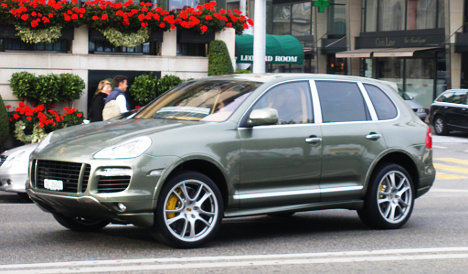SUVs (sport utility vehicles) and station wagons are increasingly popular in the mountain country, but owners of such vehicles find it difficult to manoeuvre them in parking lots designed for smaller cars.
The Swiss Automobile Club is calling for changes to parking design standards that have not changed for 20 years.
“The current parking places are too small and parking is becoming difficult,” Niklaus Zürcher, club spokesman told Der Sonntag, the German-language Sunday newspaper.
Car makers are producing bigger vehicles “to make them safer in cases of collisions,” Zürcher said.
Swiss drivers also benefit from fuel that is taxed less than most other European countries, in addition to relatively high income that allows them to buy larger cars.
The Swiss association of automobile importers also believes that parking standards need to move with the times.
“The width of parking stalls needs to be adapted to the actual size of vehicles,” Andreas Burgener, director of the association, told Der Sonntag.
According to government figures, close to one in four cars in Switzerland is a station wagon, typically longer than a regular sedan.
The number of four-by-four vehicles grew by 6.9 percent in 2011, while the average engine size of the 4.1 million cars on Swiss roads is around 2 litres.
It may take some time before parking standards in Switzerland change, however.
The Swiss association of road and transport professionals is not set to revise such standards until four years from now.
Meantime, some private operators of parking lots are not waiting.
Switzerland’s biggest retailers, Migros and Coop, have already begun to build new parking areas with XXL spaces for larger cars.



 Please whitelist us to continue reading.
Please whitelist us to continue reading.
Member comments